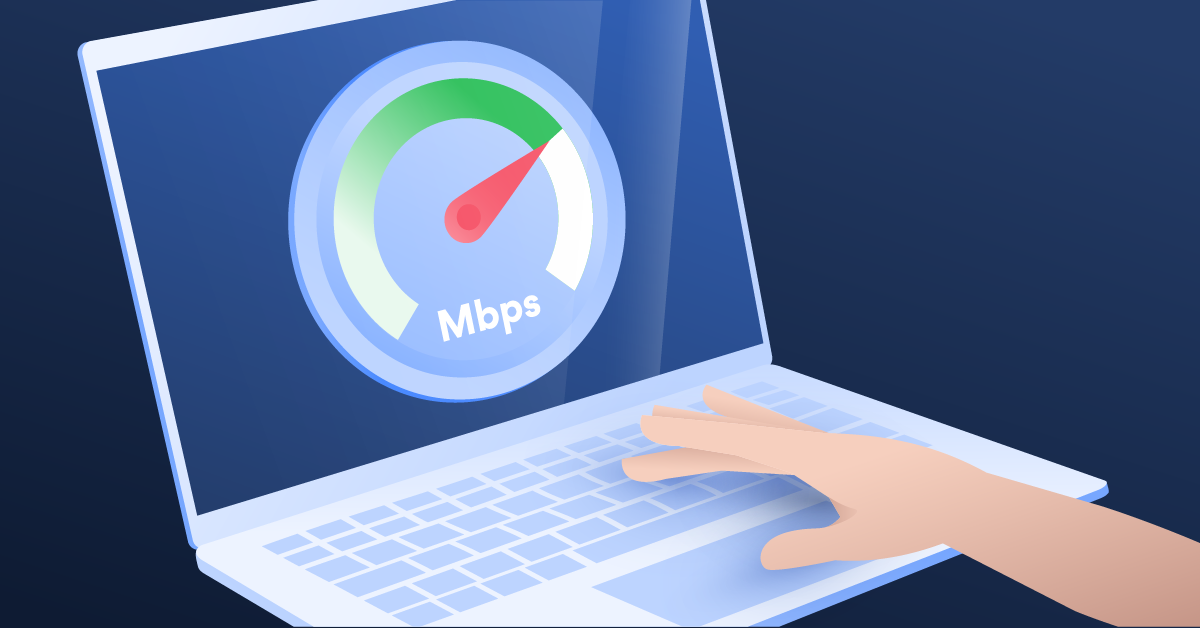Physical Address
304 North Cardinal St.
Dorchester Center, MA 02124
Physical Address
304 North Cardinal St.
Dorchester Center, MA 02124

In an era where connectivity is paramount, having a reliable and fast internet connection is crucial. Whether you’re streaming your favorite shows, working from home, or gaming online, understanding your internet speed is essential. This article explores the four best methods to check your internet speed, catering to different preferences and scenarios.
Online speed test tools are perhaps the most common and user-friendly method for gauging your internet speed. These tools are hosted on various websites and provide a quick assessment of your download and upload speeds.
Using online speed test tools is a breeze. Simply visit a reputable speed test website, click the “Begin Test” button, and wait for the tool to measure your internet speed. The results are usually displayed within minutes, detailing your download and upload speeds in megabits per second (Mbps).

For those constantly on the go, mobile apps provide a convenient way to check internet speed directly from your smartphone or tablet. These apps often offer additional features, such as historical data tracking and network diagnostics.
Ensure a reliable test by closing background applications on your mobile device before running the speed test. This prevents other apps from consuming bandwidth during the test, giving you a more accurate representation of your connection speed.
For tech-savvy individuals comfortable with command line interfaces, this method provides a more in-depth analysis of internet speed. Command line tools fetch detailed metrics and can be particularly useful for troubleshooting.
Use tools like “speedtest-cli” on Linux or macOS, or “speedtest” on Windows, by entering specific commands in the terminal or command prompt. This method provides results in a format that may be more technical but offers a deeper understanding of your internet connection.
Command line speed tests can reveal more than just basic download and upload speeds. They often provide insights into latency, jitter, and packet loss, assisting in diagnosing and resolving connectivity issues.
Your router holds valuable information about your internet connection. Accessing the router’s configuration page allows you to examine detailed metrics and settings related to your internet speed.
Look for sections like “WAN Status” or “Internet Status” on your router’s configuration page. Here, you can find information on your current download and upload speeds, as well as data on signal strength and connected devices.
If you notice discrepancies between the speeds reported by your router and online speed test tools, it may indicate an issue with your router or internal network. Troubleshoot by rebooting your router, checking for firmware updates, or consulting your internet service provider.
Several factors can contribute to slower internet speeds, including network congestion, device limitations, or issues with your internet service provider. Conducting regular speed tests can help identify and address these issues promptly.
Yes, different devices may yield varying speed test results due to differences in hardware capabilities and network adapters. For the most accurate assessment, perform speed tests on the device you use most frequently.
For standard definition streaming, a minimum speed of 3 Mbps is recommended. However, for high-definition streaming, aim for speeds of at least 5 Mbps, and for 4K streaming, a speed of 25 Mbps or higher is ideal.
Yes, using a VPN can impact your internet speed test results. VPNs introduce an additional layer of encryption, potentially leading to slower speeds. Consider disconnecting the VPN temporarily when conducting speed tests for accurate results.
Regularly checking your internet speed is advisable, especially if you notice performance issues. Conduct tests during different times of the day to identify patterns and potential problems, ensuring a consistently reliable connection.
In conclusion, having a solid grasp of your internet speed is indispensable in today’s interconnected world. The four methods discussed—online speed test tools, mobile apps, command line testing, and router configuration page analysis—offer diverse approaches suitable for various user preferences and technical expertise levels.
Regularly checking your internet speed isn’t just about knowing the numbers; it’s a proactive step towards optimizing your online activities. Whether you’re a casual user, a tech enthusiast, or someone troubleshooting connectivity issues, these methods empower you to make informed decisions about your internet usage.
By incorporating these practices into your routine, you gain the ability to identify and address potential problems promptly, ensuring a seamless and enjoyable online experience. Stay connected, stay informed, and make the most out of your digital world by keeping a close eye on your internet speed.